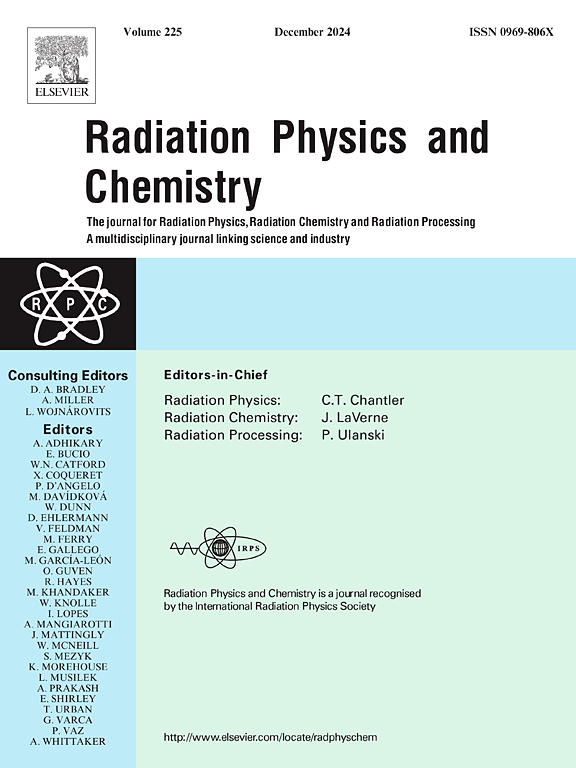核事故后水体中 90Sr/90Y 评估的淬火校正方法比较
IF 2.8
3区 物理与天体物理
Q3 CHEMISTRY, PHYSICAL
引用次数: 0
摘要
环境放射性监测的一个重要问题是 90Sr/90Y 测量技术的准确性和精确度。在有色水体中进行切伦科夫计数时,探测效率的降低可能会导致所得结果出现重大误差。本研究考虑了两种色淬校正方法:传统的 SCR(采样通道比)技术和 Muonic 峰法。后者通过宇宙背景光谱中μ介子峰的位置来显示淬火水平。迄今为止,还没有关于在对水体中的 90Sr/90Y 进行切伦科夫计数时采用μ介子峰法的报道。根据对加色测试样品的分析,比较了两种方法的性能、局限性、优点和缺点。在测试样品中,Muonic 峰法提供了与 SCR 法相似的精确度。在发生核紧急情况或核设施放射性泄漏时,对 90Sr 进行例行监测,证实了这两种技术的充分性和有效性。本文章由计算机程序翻译,如有差异,请以英文原文为准。
Comparison of quench correction methods for 90Sr/90Y assessment in waters after nuclear incident
One important matter of environmental radioactivity monitoring is the accuracy and precision of the 90Sr/90Y measurement techniques. When Cherenkov counting is carried out in coloured waters, the reduction in detection efficiency can cause significant errors in the obtained results. Two colour quench correction methods were considered in this study: the conventional SCR (Sample Channels Ratio) technique and the Muonic peak method. The latter indicates the quench level via the position of the muonic peak in the cosmic background spectrum. So far, there have been no reports about the Muonic peak method's implementation in Cherenkov counting of 90Sr/90Y in waters. The performance, limitations, advantages, and drawbacks of two methods have been compared based on the analysis of coloured spiked test samples. The Muonic peak method provided similar accuracy as the SCR method in test samples. The adequacy and effectiveness of both techniques have been confirmed during 90Sr routine monitoring in the event of a nuclear emergency or radioactive leakage from nuclear facilities.
求助全文
通过发布文献求助,成功后即可免费获取论文全文。
去求助
来源期刊

Radiation Physics and Chemistry
化学-核科学技术
CiteScore
5.60
自引率
17.20%
发文量
574
审稿时长
12 weeks
期刊介绍:
Radiation Physics and Chemistry is a multidisciplinary journal that provides a medium for publication of substantial and original papers, reviews, and short communications which focus on research and developments involving ionizing radiation in radiation physics, radiation chemistry and radiation processing.
The journal aims to publish papers with significance to an international audience, containing substantial novelty and scientific impact. The Editors reserve the rights to reject, with or without external review, papers that do not meet these criteria. This could include papers that are very similar to previous publications, only with changed target substrates, employed materials, analyzed sites and experimental methods, report results without presenting new insights and/or hypothesis testing, or do not focus on the radiation effects.
 求助内容:
求助内容: 应助结果提醒方式:
应助结果提醒方式:


